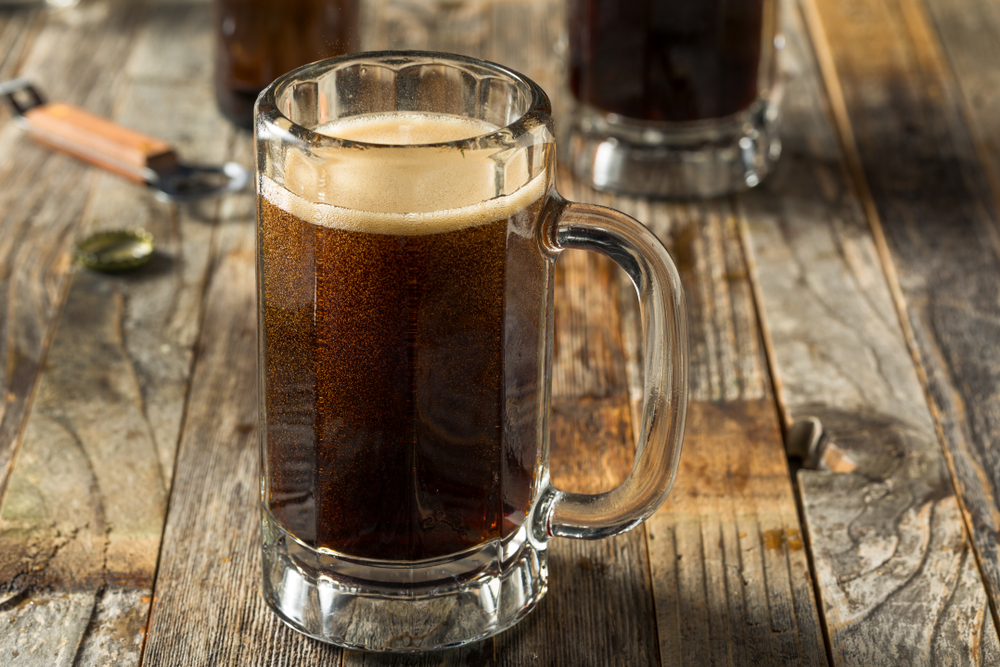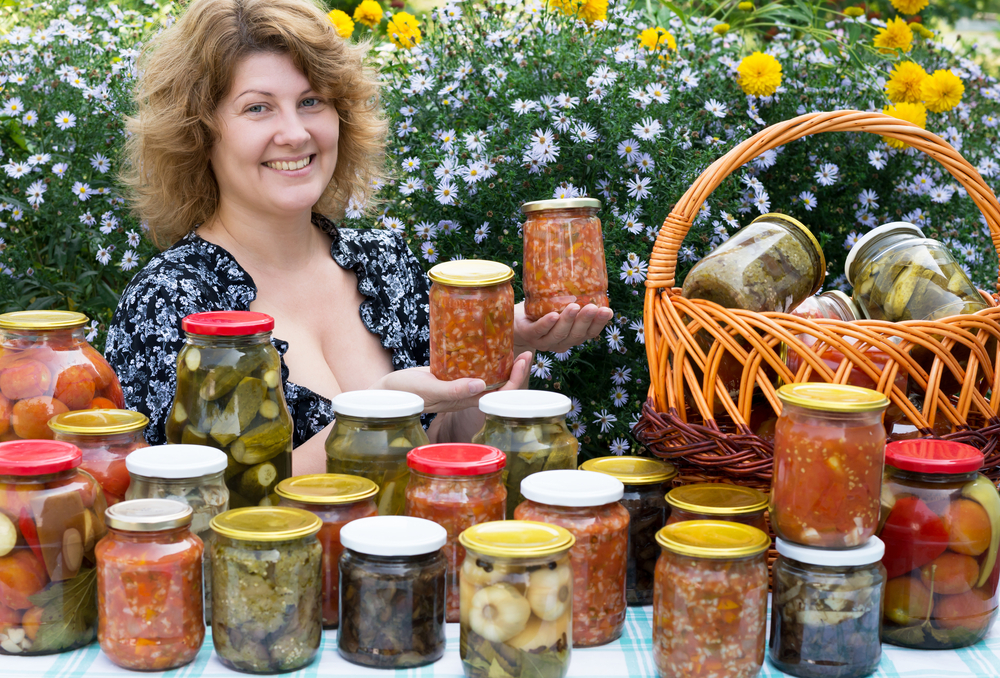If you made any type of beverage at home, and you’ve put all your knowledge and passion into it, you know there’s something almost magical about opening your first bottle of homemade root beer (in my case). I believe is more than a drink, it’s a connection to generations of folks who knew how to create something wonderful from the resources around them.
Before mass production and corner stores, families gathered roots, barks, and herbs to brew beverages that did more than quench thirst. They built community, lifted spirits, and reminded people that good things take time.

For example, the Amish and other traditional communities never lost this knowledge. And while the rest of folks out there were buying soda in plastic bottles, they continued brewing root beer the old way. They understand that self-sufficiency doesn’t require just growing food and it also requires creating traditions that nourish both body and soul. So, today we’ll talk about root beer and why making it should be on everyone’s list.
Why Root Beer Matters More Than You Think
You, like many others out there, when you think about preparedness or homesteading, you probably picture canning vegetables or raising chickens. But if someone would suggest making your own root beer? That seems like a luxury, right? However, like any survival expert worth its salt will tell you, during a crisis, morale matters. Ask anyone who’s lived through difficult times, and they’ll tell you that small pleasures make a huge difference. Enjoying a cold glass of something sweet and fizzy on a hot summer day lifts your spirit when you feel everything is pressing down on you.
Beyond that, learning to ferment root beer teaches you fundamental skills that apply to countless other preservation projects. You’re working with wild yeasts, managing carbonation, understanding botanical properties, and practicing patience. These same principles show up when you’re making vinegar, fermenting vegetables, or brewing medicinal tinctures.
And there’s also that pride and satisfaction in telling someone, “Yeah, I made this from scratch.” It’s empowering in a way that can’t be described in simple words.
>>If you’ve ever wanted to rediscover the kind of natural wisdom our grandparents relied on, this timeless collection of herbal and old-world remedies is a great place to start.<<
A Word About Safety
Traditional root beer recipes require sassafras root, which gives that distinctive, almost creamy flavor many of us remember from childhood. However, we need to address the elephant in the room: sassafras contains safrole, a compound that raised concerns in animal studies back in the 1960s. The FDA banned it as a food additive, which is why commercial root beers switched to artificial flavoring.
So, should you use sassafras? Honestly, that’s your call to make. I’ve met quite a few traditional practitioners which are convinced that occasional use of sassafras in beverages is vastly different from the concentrated doses used in those studies. In fact, the Amish and other communities have continued using it without apparent issues. I just wanted to let you know the controversy exists.
For safety-conscious folks, there are alternatives like birch bark, wintergreen, sarsaparilla, and various other botanicals. You can also buy safrole-free sassafras extract if you want that flavor profile without worrying about health issue. Like I’ve alleyways said for the past 20 years, when it comes to preparedness and self-sufficiency, the choice is yours, but make it an informed one.
Gathering the Ingredients
Making root beer involves a quite flexible process. Early recipes varied wildly depending on what grew in each region. Some families swore by their secret combinations of a dozen different roots and barks. Others kept it simple with just three or four key ingredients.
For a basic traditional root beer, you’ll need some form of primary flavoring like sassafras root, birch bark, or a combination of roots like sarsaparilla and dandelion. You’ll want something sweet (sugar, molasses, or honey), water, and yeast (either wild or commercial, depending on your method). Many recipes also include secondary flavoring agents like wintergreen, licorice root, vanilla, ginger, or anise to add complexity and depth.
You can forage for many of these ingredients if you know what you’re doing. Sassafras trees are common in the Eastern United States, easily identified by their mitten-shaped leaves and aromatic roots. Birch trees grow across northern regions, and you can carefully harvest small amounts of bark without harming the tree. Just make sure you’re on property where you have permission, and never take more than you need. Sustainable harvesting means the resource stays available for next year and the next generation.
If foraging isn’t your thing, you can order these botanicals online or find them at herb shops.
>>Clean water is just as vital as food. Learn about a simple system that produces pure drinking water directly from the air, even when the grid is down.<<
The Old-World Method of Wild Fermentation
This is how root beer was made before anyone understood microbiology. Our ancestors didn’t know about Saccharomyces cerevisiae or lactobacillus strains and they just knew that if you mixed sweet liquid with certain ingredients and waited, something wonderful happens. The wild yeasts present in the air and on the plant materials did the work.
>>Many of these old techniques were once part of every home medicine chest. Explore how traditional herbs and fermented remedies supported families through tough times.<<
Here’s a traditional small-batch recipe that would’ve been familiar to Amish families a century ago:
Traditional Sassafras Root Beer (Wild Fermentation)
Start by making a strong decoction. Take about four ounces of chopped sassafras root (or substitute with two ounces of birch bark and two ounces of sarsaparilla root) and place them in a large pot with two gallons of water. Bring it to a boil, then reduce to a simmer for about twenty minutes. You want the water to take on a deep color and strong aroma. The kitchen should smell earthy and sweet.
Strain out the roots and bark through cheesecloth or a fine-mesh strainer. While the liquid is still hot, add two cups of sugar or honey, stirring until completely dissolved. Some folks prefer molasses for a darker, more complex flavor. I recommend you use half a cup of molasses and one and a half cups of sugar if you want to split the difference.
>>If you enjoy self-reliant living, you can also grow a steady source of fresh food. See how one compact aquaponic system keeps vegetables and fish thriving all year.<<
Now comes the interesting part. Add a tablespoon of dried ginger root (crushed) and any other secondary flavors you’re using. Perhaps you want to add a teaspoon of wintergreen, a piece of vanilla bean, or a star anise pod. Let this mixture cool to room temperature. This is crucial because heat kills yeast, and you need those microorganisms alive and active.
Once it’s cool, transfer the liquid to a clean crock or large jar. Cover it with a cloth secured with a rubber band since you want air flow, but you don’t want bugs or debris falling in. Place it somewhere at room temperature, away from direct sunlight.
Now is the time to wait since over the next three to five days, wild yeasts will colonize the liquid and begin fermentation. You’ll see bubbles forming, maybe some foam on top. Taste it daily. When it’s slightly tangy and has a hint of carbonation, it’s ready to bottle.
For bottling, you’ll need strong glass bottles and I can tell you from experience that swing-top bottles work great, or you can save and reuse commercial beer bottles with a capper. Before bottling, add about a quarter teaspoon of sugar to each bottle. This gives the yeast something to eat while trapped in the sealed bottle, creating carbonation. Pour in your root beer, leaving about an inch of headspace, and seal tightly.
Store bottles at room temperature for two to three days to build carbonation, then move them to the refrigerator. The cold slows fermentation dramatically. Your root beer is ready to drink, though it’ll continue developing flavor for another week or so.
The Risk Factor: Wild fermentation is unpredictable and sometimes you get perfect root beer. However, there are times when you get something that tastes like feet. There’s also a small risk of over-carbonation, which can cause bottles to explode if you’re not careful. Check bottles daily during the room-temperature phase, and if they feel excessively firm, burp them by briefly opening and resealing. This is the authentic method, but it requires attention and acceptance that not every batch turns out perfect.
The Modern Approach: Controlled Fermentation with Commercial Yeast
Most folks today, including myself, prefer a more predictable method using commercial yeast. You lose a tiny bit of the “wild” character, but you gain consistency and safety. This is probably the best starting point if you’re new to fermentation and if you want to reduce waste.
Modern Birch Bark Root Beer (Commercial Yeast Method)
This recipe uses birch bark as the primary flavor, which gives you a slightly minty, wintergreen-like taste without the sassafras controversy. You’ll need two ounces of dried birch bark, one ounce of sarsaparilla root, half an ounce of dried ginger root, a quarter ounce of wintergreen leaf, two gallons of water, two cups of sugar, and a quarter teaspoon of champagne yeast or ale yeast.
Make your decoction the same way as before by combining the birch bark, sarsaparilla, ginger, and wintergreen in two gallons of water. Simmer for twenty minutes, strain, and dissolve the sugar while hot. Cool to room temperature.
Here’s the key difference: instead of relying on wild yeasts, you’ll pitch commercial yeast. Champagne yeast works beautifully because it’s vigorous and creates fine bubbles. Ale yeast gives a slightly more complex flavor. Sprinkle the yeast over the cooled liquid and stir gently.
>>Trial and error is part of every self-reliant skill. Discover proven methods for keeping your preserved foods safe and long lasting without waste.<<
Transfer to your fermentation container. You can use an airlock here if you want to get fancy, but as mentioned before, a cloth to cover the container is fine too. Let it ferment for two to four days at room temperature. You’ll see active bubbling as the yeast converts sugar to alcohol and carbon dioxide. Don’t worry about the alcohol content since it stays very low, usually less than one percent.
When fermentation slows (bubbles become infrequent), taste your root beer. It should be slightly sweet still, with a pleasant tang. If it’s too sweet, give it another day. If it’s too dry, you’ve let it go too long. Once again, my personal experience can vouch that it’s still drinkable, but not ideal.
Bottle the same way as the wild fermentation method, adding a quarter teaspoon of sugar per bottle before sealing. Give it two to three days at room temperature, then refrigerate. The commercial yeast method typically produces more consistent carbonation levels, making it safer for beginners.
Bottling Wisdom and Explosion Prevention
This is the scary part for most beginners and they are afraid their bottles will turn into bombs. Yes, bottles can explode when root beer over-carbonates and I’m not trying to scare you away. You need to respect the process because glass shards and sticky liquid coating your ceiling is nobody’s idea of a good time.
Use proper bottles designed for pressure. Avoid regular wine bottles since these aren’t strong enough. Beer bottles or swing-top bottles rated for carbonation are what you want. Inspect each bottle for chips, cracks, or weak spots before using.
Don’t over-prime. That quarter teaspoon of sugar per bottle is plenty. More is not better but rather dangerous.
Store bottles where you can hear them and where a potential explosion won’t cause major damage. A thick cardboard box in a cool basement works well since it will collect the glass shards if something goes wrong.
>>Food security starts with dependable staples. See how preppers are storing real, tender beef that stays fresh for decades without refrigeration.<<
Check carbonation after 24 hours by gently opening one bottle. If it’s already highly carbonated, move all bottles to the fridge immediately. If there’s barely any fizz, give them another day or two.
When in doubt, burp your bottles. Opening them briefly to release excess pressure, then resealing, is way better than cleaning up a mess.

My 2 cents
I’ve been making root beer for a while now and I can tell you that there are some trail and error involved in the process. However, once you get the hang of it, you will be able to enjoy your homemade root beer without worries. Like everything in life, it requires some patience, attention to details and love.






Read the full article here











